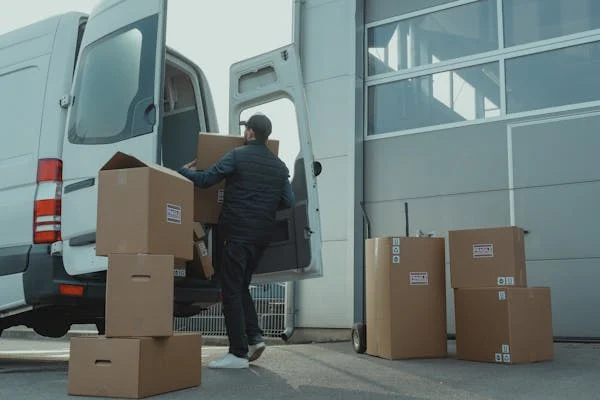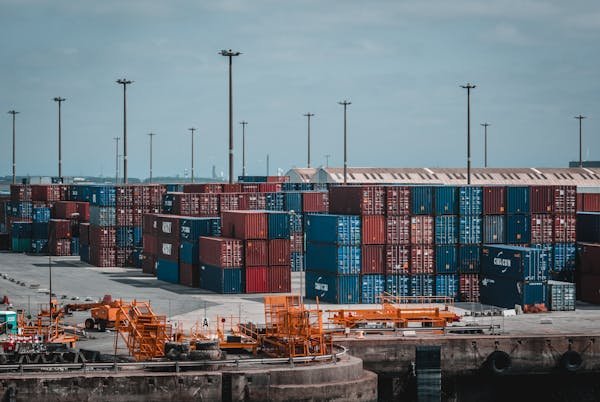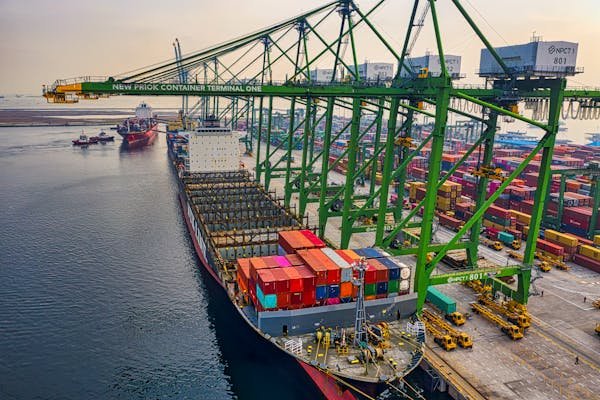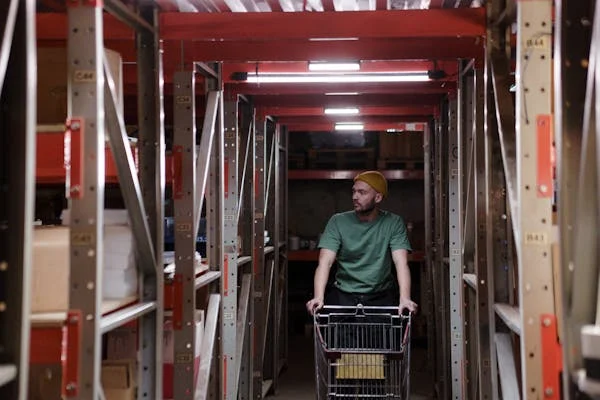In today’s world of instant gratification, fast shipping isn’t a luxury—it’s the norm. But behind every package that shows up at your door is a complex and costly process, especially the final stretch from the warehouse to your home. This is what’s called last mile delivery. And it’s expensive—really expensive.
1. Last mile delivery accounts for 53% of total shipping costs
Why is the last mile so expensive?
The last mile involves the most touches, the most routes, and the most unpredictability. Unlike bulk shipping where you move large volumes in a single trip, last mile delivery is fragmented. You’re delivering small packages to individual addresses—often on different streets, in different cities, sometimes even on different islands.
Fuel costs, labor, vehicle maintenance, and failed delivery attempts all pile on. What’s worse, each delivery might have its own unique issues—like inaccessible buildings, no one being home, or incorrect addresses.
This makes it less efficient and harder to optimize than other parts of the logistics chain.
What this means for your business
When over half of your delivery cost is coming from the final step, every small improvement you make in the last mile has a big payoff.
Here’s how to manage it:
Optimize your delivery routes with real-time data
Modern routing software uses real-time traffic data, delivery windows, and road conditions to reduce travel time and fuel use. The more stops you can make per hour, the lower your cost per delivery.
Increase delivery density
If you can serve more customers in a smaller geographic area, you spend less time and money per package. Encourage order clustering through smart delivery windows or localized marketing efforts.
Use micro-fulfillment centers
These are small warehouse hubs located close to urban centers. They reduce the travel distance needed for deliveries and let you fulfill orders faster and cheaper.
Offer delivery incentives
Give customers a discount or loyalty points if they choose slower shipping or group deliveries. This helps you consolidate routes and save costs.
2. The global last mile delivery market is projected to reach $200.42 billion by 2027
What’s driving the growth?
This massive market growth isn’t random. It’s the result of two big trends: the explosive rise in online shopping and the increasing expectations of customers.
People don’t just want fast delivery—they expect it. Whether it’s groceries, electronics, or medicine, customers want it on their doorstep quickly and without hassle.
But what does this mean for your strategy?
The growing market is both an opportunity and a challenge. More demand means more revenue potential, but it also puts pressure on your systems.
Invest in scalable technology
As demand rises, manual operations won’t cut it. You need delivery management platforms that can handle routing, tracking, communications, and feedback—all in real time.
Prepare for seasonal spikes
Holidays, sales, and special events often cause demand to spike. Plan for these ahead of time by scaling up temporary staffing, partnering with third-party delivery networks, or pre-positioning inventory in high-demand areas.
Differentiate with experience, not just speed
Everyone’s racing to deliver fast. But experience matters just as much. Easy-to-follow tracking, reliable ETAs, and friendly delivery personnel all contribute to customer loyalty.
Build flexible delivery networks
Sometimes owning your own delivery fleet makes sense. Other times, partnering with gig-economy drivers or crowdsourced delivery services lets you flex on demand. Mix and match depending on your needs and location.
3. Average last mile delivery cost per package is $10, with only $8 recovered
Why the gap?
Many companies lose money on every delivery. Why? Because they either offer free shipping to stay competitive or don’t charge enough to cover their actual costs.
That $2 gap may not seem like a lot until you multiply it by thousands of deliveries. Suddenly, you’re looking at a massive hole in your profitability.
How to close the gap
Reducing the cost or recovering more from the customer are the only two paths. Let’s break this down:
Improve operational efficiency
Every wasted minute and every empty mile adds cost. Use delivery performance analytics to identify and fix weak points in your process. Are drivers taking inefficient routes? Are packages delayed due to internal bottlenecks?
Introduce delivery tiers
Give customers options. Many are willing to pay for faster delivery if they really need it. Others are okay with waiting a day or two if it saves them money. Offering these choices gives you room to balance cost and value.
Bundle deliveries
If one customer places multiple orders in a short period, combine them. It saves you time and shipping costs. Use email or app alerts to let customers know when this is happening—it builds goodwill and trust.
Use lockers and pickup points
Delivering to a smart locker or local pickup point is often cheaper than a home delivery. Plus, it avoids the risk of failed deliveries. Encourage customers to choose these options with small discounts or incentives.
4. 73% of consumers expect affordable and fast deliveries
Expectations are high—and still rising
Customers want the best of both worlds: fast and cheap. In fact, almost three out of four shoppers now say they expect both. Not one or the other. This expectation is becoming the standard, especially in competitive markets where big brands like Amazon and Walmart have changed the game.
For small to mid-sized businesses, this can feel like a race they can’t win. But understanding what’s behind these expectations is key.
What’s causing these demands?
People are used to instant everything. Instant streaming, instant communication—and now, instant delivery. They don’t just want packages quickly, they assume it’s possible without extra cost.
But here’s the catch: faster shipping usually means higher costs. Express delivery requires more vehicles, more staff, and more coordination. It puts pressure on inventory, too.
How to meet expectations without going broke
You can’t always offer both fast and cheap. But you can offer choices and control the narrative.
Communicate clearly and honestly
Be upfront about delivery options and timeframes. If customers know exactly when their order will arrive—and why—it builds trust, even if it takes a little longer.
Leverage delivery as a marketing tool
Fast and affordable shipping can be used as a hook. Promote it in ads, on your homepage, and at checkout. Make it part of your brand promise.
Use a regional carrier network
Local and regional carriers often offer better rates and faster turnarounds than national giants. Consider building partnerships in key zones to take advantage of this.
Offer member-based shipping perks
Create a subscription-based model (like Amazon Prime) where members get free shipping for a fee. It builds loyalty and gives you upfront revenue to cover costs.
5. 56% of logistics professionals say last mile is the most inefficient process in the supply chain
Why does last mile stand out?
The rest of the supply chain benefits from bulk processes. Pallets, crates, and containers move in groups. Everything is structured, scheduled, and optimized. The last mile, by contrast, is unpredictable and individual.
One delivery may go to a 5th-floor apartment, another to a gated community. Traffic, weather, customer availability—all add friction. No wonder over half of logistics experts view it as the most inefficient link.
What’s the impact of this inefficiency?
It leads to delays, extra fuel consumption, frustrated customers, and higher labor costs. In some cases, it means rerouting or redelivering the same package. The effect on both customer experience and operating margins can be serious.
Turning inefficiency into opportunity
The silver lining? If last mile is your weakest link, improving it can bring the biggest gains.
Track KPIs that actually matter
Monitor delivery success rate, average delivery time, cost per delivery, and customer satisfaction. These numbers guide real improvements, not guesswork.
Equip drivers with better tools
Give your delivery personnel access to mobile apps that help with real-time navigation, proof of delivery, and instant communication. Even a 10% improvement in driver productivity can lead to big savings.
Use centralized dispatching
Centralized or automated dispatching software ensures that the right driver takes the right route at the right time. This eliminates wasted trips and balances the workload.
Analyze failure points
Map out where inefficiencies occur. Is it in routing? Vehicle downtime? Communication? Solving specific bottlenecks leads to significant time and cost reductions.
6. Failed deliveries cost retailers up to $17 per order
When a delivery fails, the cost stacks up fast
Every time a package doesn’t reach its destination, it creates a ripple effect. You might need to send a second driver, reprocess the order, handle customer support, and update systems. All of this adds cost—an average of $17 or more per failed delivery.
Now multiply that by hundreds or thousands of missed deliveries per month. It becomes clear why this is a high-stakes issue for retailers and logistics teams.
What causes failed deliveries?
There are several common causes:
- No one is home
- The address is incorrect or incomplete
- The package can’t be left safely
- Access is restricted (e.g. gated communities or apartment buildings)
Each issue adds time and friction. Worse, customers may blame you—even if the issue wasn’t your fault.
Strategies to prevent failure
Avoiding failed deliveries is always cheaper than dealing with them after the fact. Here’s how:
Confirm addresses automatically
Use address validation tools at checkout. These verify street names, postal codes, and apartment numbers in real time. A typo caught early saves hours later.
Offer real-time delivery tracking
Customers who know when a package is arriving are more likely to be available. Let them track the driver and get notified when the package is nearby.
Give delivery instructions options
Let people specify if a package can be left at the door, with a neighbor, or at a pickup location. The more choices, the higher the chance of success.
Use proof-of-delivery systems
Having photographic or signature confirmation reduces disputes. It also helps when resolving customer complaints or loss claims.
Re-attempt with a strategy
Don’t just try again blindly. Use data from the failed delivery to adjust timing, method, or contact strategy. This improves the second attempt dramatically.
7. Urban delivery costs are 50% higher than suburban or rural deliveries
Why is urban delivery so expensive?
Cities are dense, busy, and unpredictable. Delivering in urban areas might sound efficient—you’ve got lots of customers packed close together—but the reality is different. Traffic jams, limited parking, loading restrictions, and complex buildings all slow things down. Every extra minute on the road increases labor and fuel costs.
And while rural routes involve longer drives, they’re usually smoother and faster with fewer stops and interruptions. That’s why urban delivery costs can be up to 50% more than their rural counterparts.
What this means for your logistics planning
If your primary customer base is in cities, you need to rethink your strategy from the ground up. It’s not just about speed—it’s about removing the friction that causes delays and inefficiency.
Use bikes and electric scooters
In tight city environments, delivery bikes and scooters can bypass traffic, park almost anywhere, and cut fuel costs to zero. This model works especially well for food, pharmacy, and small parcel deliveries.
Partner with local courier services
Small, local couriers often know the area better than national services. They understand building access codes, know how to navigate alleys, and can adjust quickly. Use them to your advantage.
Rely on micro-warehousing
Set up small distribution points inside the city. This helps reduce the “last mile” to the “last block.” It means your drivers start closer to the customer, which speeds up the process and cuts costs.
Offer flexible delivery windows
Let customers choose less-congested time slots, like evenings or weekends, when parking is easier and traffic is lighter. Some may prefer off-peak options if it saves them a buck or two.
Embrace smart lockers and pickup points
In cities, these options reduce delivery attempts, increase security, and free up your team for more stops in less time. They’re cost-effective and often more convenient for the customer.
8. 60% of online shoppers abandon carts due to high delivery costs
Cost is killing conversions
It’s a harsh reality for online stores: more than half of your potential buyers might leave just because the shipping charge feels too high. Even if your product is great, unexpected fees at checkout can ruin the experience.
This stat highlights a key issue—customers value transparency and affordability. If shipping feels like a “gotcha,” they’ll bounce to a competitor.
Why does this happen?
It’s usually one of three things:
- The customer wasn’t expecting the cost
- The cost feels too high compared to the product
- They were comparison shopping and found a cheaper option
Even a $5 delivery fee can feel excessive on a $20 item. This isn’t just about price—it’s about perception.
How to win back those sales
If delivery costs are killing your conversions, it’s time to act.
Be upfront about shipping
Don’t hide delivery fees until the last step. Display estimated shipping costs early in the buying journey—or, better yet, include them in product pages.
Offer free shipping thresholds
Set a minimum order amount that qualifies for free shipping. This encourages people to spend more while feeling like they’re getting a deal.
Use flat-rate shipping
People love simplicity. A single flat rate—like $4.95 no matter what—removes guesswork and builds trust. It’s often better than dynamic pricing, which can seem arbitrary.
Offer local pickup or store drop-off
If you have a physical location or partner stores, let customers pick up items to avoid shipping costs altogether. Highlight this option clearly.
Bundle shipping into product pricing
Raise your product prices slightly and offer “free shipping.” Many customers are happy to pay more for the item itself if it means skipping a delivery charge. This works especially well if your competitors aren’t doing it.
9. Driver wages account for 40–50% of last mile delivery expenses
People power comes at a premium
In the last mile, drivers are your biggest asset—and your biggest cost. Paying your delivery team is non-negotiable, but it’s also one of the areas where small improvements can create major savings.
The reason wages are such a large chunk is simple: deliveries are labor-intensive. Every stop takes time. Every doorbell rang, signature collected, and redelivery attempt adds minutes. And those minutes add up to hours—hours that you’re paying for.
Reducing cost without sacrificing quality
You can’t (and shouldn’t) underpay your team. But you can help them be more productive. Here’s how:
Use intelligent route planning
Smart route optimization tools reduce time spent on the road. They sequence stops in the most efficient order and reroute in real time to avoid delays. That means fewer hours per delivery and better fuel efficiency.

Minimize idle time
Idle time is one of the biggest hidden costs. Use tracking to understand when and where your drivers are waiting—at warehouses, traffic signals, or customer doors—and make process improvements accordingly.
Train for speed and accuracy
Well-trained drivers make fewer mistakes and faster decisions. A small investment in onboarding and ongoing training can make a huge difference in output.
Automate paperwork and updates
Use apps that log delivery times, capture signatures, and send updates to HQ in real time. This eliminates the end-of-day data crunch and helps drivers move on to their next task faster.
Incentivize performance
Offer bonuses or incentives for on-time deliveries, low return rates, or high customer ratings. A motivated driver is often a more efficient one—and usually a happier one too.
10. Fuel contributes to 10–20% of the last mile cost
Why fuel is still a major player
Even with all the buzz around electric vehicles and sustainability, fuel remains one of the biggest cost centers in last mile delivery. It typically takes up between 10% and 20% of the entire delivery cost—and in times of price volatility, that number can shoot up fast.
This cost doesn’t just come from the pump. It’s influenced by traffic patterns, idling time, poor route planning, and even weather. Every minute spent in traffic or circling a block looking for parking eats away at your margin.
How to cut your fuel bill without slowing down
Reducing fuel use means reducing cost. And there are smart, scalable ways to do that.
Plan routes with live traffic data
Apps that adjust in real time based on traffic conditions can shave off unnecessary miles and minutes. Less time on the road equals less fuel burned.
Reduce delivery radius per vehicle
Assign each delivery vehicle to a tighter service area. This reduces the average mileage per delivery run, especially in cities or towns where stops are close together.
Encourage fuel-efficient driving habits
Train drivers to accelerate smoothly, limit idling, and brake gently. These simple adjustments can improve mileage significantly—sometimes by 10% or more.
Maintain vehicles regularly
Low tire pressure, dirty air filters, and old spark plugs reduce fuel efficiency. Routine checks ensure your fleet runs at its best and avoids breakdowns.
Consider alternative fuel vehicles
Electric vans, hybrids, and even natural gas vehicles are becoming more common in delivery fleets. They cut fuel costs and may qualify for tax credits or incentives, depending on your location.
11. Same-day delivery costs are 1.5–2x higher than standard delivery
Speed comes at a price
Customers love the idea of same-day delivery. But behind the scenes, it’s a logistics sprint—and an expensive one. Everything needs to move faster: order picking, packing, loading, and driving. You have fewer delivery windows and no room for error.
That’s why same-day delivery can cost up to twice as much as regular shipping. You’re essentially buying speed with money.
Is it worth offering same-day?
In some cases, yes. If you’re in a competitive market and customers value instant gratification, offering same-day can drive conversions and customer loyalty. But if you don’t plan it right, it can eat away at your profits.
Limit same-day by geography
Only offer same-day service in zip codes where you have the operational capacity to fulfill it efficiently. Focus on areas near your warehouses or micro-fulfillment centers.
Set smart cutoff times
Establish clear order cutoffs—like 11 a.m. or 1 p.m.—to give your team time to prepare the shipment and route the delivery. Pushing orders past cutoff risks delays and customer frustration.
Use premium pricing
Don’t absorb the full cost. Charge a reasonable premium for same-day service. Many customers are willing to pay extra for speed when they need it urgently.
Batch deliveries by zone
Group same-day deliveries in tight zones to reduce travel time. This lets your drivers make more stops per trip and stretches your budget further.
Outsource strategically
Partner with third-party providers who specialize in rapid delivery. Their networks and experience can help you scale faster than building from scratch.
12. Free delivery demands add an average $5.50 to cost per order
The real cost of “free”
Free delivery isn’t actually free—it’s just a cost you absorb elsewhere. On average, offering free shipping adds about $5.50 to each order. For high-margin products, that might be manageable. But for low-margin businesses, it’s a serious squeeze.
Still, customers expect it. In many cases, they’ll choose a slightly more expensive product just because it ships free. It’s not just about saving money—it feels easier.
Making free shipping work for your bottom line
The key is to offer free shipping without going broke. Here’s how:
Set minimum order thresholds
Offer free delivery only on orders above a certain value—say $50 or $75. This increases your average order value and helps offset shipping costs.
Raise product prices slightly
A small price bump (say 5–10%) across your catalog can fund your free shipping offer without hurting conversion. Most customers won’t notice a $1 increase if they’re saving on delivery.
Offer free delivery to members
Build a loyalty or subscription program where members get perks like free shipping. The monthly or annual fee gives you recurring revenue and makes free delivery more sustainable.
Use fulfillment zones
If you fulfill from multiple locations, ship from the warehouse closest to the customer. This reduces shipping costs and makes it easier to offer free delivery at a lower internal expense.
Limit delivery options
Free shipping doesn’t have to be fast. Offer slower, economy delivery for free—but charge for expedited options. This way, customers still have choice, and your logistics stay profitable.
13. Parcel volumes are growing at a 15–20% annual rate globally
The delivery boom is here—and growing fast
Thanks to the explosion of e-commerce, subscription boxes, groceries on demand, and even medicine deliveries, parcel volume worldwide is growing by 15% to 20% every year. That’s not a small number. It means millions of additional packages are hitting the road daily—each needing to be sorted, routed, and delivered.
This trend isn’t slowing down anytime soon. As more consumers shift their shopping habits online and more businesses promise lightning-fast shipping, the pressure on last mile logistics will only intensify.
What this means for your operations
More parcels mean more drivers, more routes, more warehouse space, and more complexity. If you’re not scaling smartly, you’ll either fall behind or burn out your resources trying to keep up.
Here’s how to handle the surge:
Automate wherever possible
Manual systems break down at scale. Use warehouse management software, auto-sorting systems, and route optimization tools to keep up with increasing demand.
Scale your fleet dynamically
You don’t always need a full-time team to handle peak volume. Use a mix of owned vehicles and on-demand gig drivers so you can ramp up when needed and reduce costs in slower periods.
Use predictive analytics
Track ordering patterns and customer behavior to predict peak days and order volumes. This lets you staff smarter and allocate resources in advance rather than react last-minute.
Improve packaging efficiency
Smaller, smarter packaging saves space and reduces the number of trips needed for delivery. Even shaving a few inches off box size can boost vehicle capacity.
Build delivery hubs closer to customers
Use small urban fulfillment centers or dark stores to shorten the delivery distance and respond quickly to high demand. This helps you manage volume without delaying orders.
14. Missed delivery attempts occur in 5–10% of orders
One failed attempt can undo everything
Even if your logistics chain runs perfectly, a missed delivery wipes out the efficiency. And it’s surprisingly common—anywhere from 5% to 10% of deliveries fail on the first try. That’s a lot of wasted fuel, time, and labor.
Worse, failed deliveries lead to unhappy customers. No one wants to wait longer, deal with rescheduling, or worry about where their package is.
Why deliveries fail
Most missed deliveries come down to one of these:
- No one was home to receive the package
- Incorrect or incomplete address
- Gated access or secure building with no way in
- Weather or unforeseen road closures
Each one creates delays and adds cost.
How to fix the failure rate
Improving your first-attempt success rate is one of the most direct ways to cut last mile costs and boost customer satisfaction.
Provide real-time ETAs
If a customer knows their package will arrive between 1–2 p.m., they’re more likely to be available. Use tracking tools with accurate, real-time windows.
Enable live delivery updates
Let customers know when the driver is nearby. A quick text or app alert can help them make sure someone is available to receive the delivery.

Use delivery lockers or pickup points
These fixed, secure locations eliminate the need for a customer to be home. They’re ideal for apartments, offices, and urban settings where missed deliveries are more common.
Allow specific delivery instructions
Let customers add notes like “Leave with neighbor” or “Use side entrance.” These reduce confusion and improve the odds of a successful first attempt.
Confirm addresses automatically at checkout
Use smart tools to validate addresses in real time. A mistyped zip code or missing apartment number is a common and costly error that’s easy to prevent.
15. Reverse logistics add 20–30% to last mile operational costs
Returns are expensive—and they’re not going away
When a customer sends something back, it doesn’t just reverse the delivery—it creates a whole new workflow. You need to collect the item, transport it back to a hub, inspect it, restock it, and maybe even repackage or recycle it. Each of these steps costs money.
That’s why reverse logistics adds 20% to 30% to your last mile costs. And with the rise of free return policies, the volume of returned goods keeps climbing.
What makes reverse logistics so costly?
It’s disorganized by nature. Forward logistics is a planned, organized flow from warehouse to customer. Reverse logistics is reactive. You never know when or why an item will be returned, or what condition it’ll arrive in.
There’s also the customer side—returns need to be easy, or you risk losing loyalty. But the easier it is for them, the more expensive it tends to be for you.
Making returns manageable and cost-effective
You can’t avoid returns—but you can make them less painful for your business.
Streamline your return process
Use return portals that let customers initiate returns quickly, select reasons, and choose drop-off methods. This reduces customer service strain and speeds up processing.
Offer in-person drop-off locations
Partner with retail stores or locker services to collect returns. This is often cheaper and faster than home pickups and increases return flexibility for customers.
Inspect and sort close to the customer
Instead of sending all returns back to a central warehouse, use regional centers to inspect and sort. This speeds up restocking and reduces transport costs.
Identify and reduce frequent return triggers
Look for patterns—are certain items returned more than others? Is sizing unclear? Are descriptions misleading? Fixing these upstream issues reduces return volume.
Resell or recycle returned products
Don’t just eat the cost. Use outlets, donation programs, or recycling partners to recover value from returned items. Every dollar you salvage helps offset reverse logistics costs.
16. 41% of consumers are willing to pay extra for same-day delivery
People are paying for speed—but only when it matters
Not everyone wants to wait. In fact, 41% of shoppers are happy to pay more if it means their package arrives the same day. That’s a powerful insight. It means delivery isn’t always just a cost—it can be a revenue driver if you frame it right.
This is especially true for time-sensitive purchases like gifts, perishables, or forgotten items (like chargers before a trip). But the key is to offer it strategically—not across the board.
How to monetize same-day delivery the smart way
You don’t need to offer this to everyone. You just need to offer it where it makes sense.
Target urgency-driven segments
Some customer groups are more likely to want same-day service: busy professionals, parents, last-minute shoppers, and B2B buyers. Tailor your messaging to highlight this convenience.
Create limited-time delivery windows
Use same-day delivery as a promotional tool. Offer it free or discounted during flash sales, holidays, or peak buying periods. It creates urgency and can dramatically boost conversion rates.
Display it as a premium option at checkout
Don’t bury the offer. Show it clearly next to standard shipping, with a clear delivery estimate like “Delivered today by 8 p.m.” This communicates value and lets customers make the call.
Optimize inventory positioning
To make same-day profitable, you need products stored close to your customers. Use local warehouses, third-party fulfillment, or dark stores to cut down the travel time.
Partner with last-mile delivery networks
You don’t need to do it all in-house. Use delivery platforms that specialize in same-day logistics. They already have the network and tech stack to handle the speed.
17. Delivery density improvements can reduce costs by up to 30%
More stops, less cost—when it’s done right
Delivery density is all about maximizing how many packages a driver drops off in a single trip, in a small area. The denser your delivery routes, the lower your cost per stop.
This is why urban deliveries can be efficient—if managed well. Improving density can slash costs by as much as 30%. That’s huge, especially at scale.
How to increase your delivery density
Even small changes in how you group orders and manage routes can yield major savings.
Encourage order clustering
Offer incentives for customers to select similar delivery days in a given neighborhood. Think of it like carpooling—but for packages. This lets you deliver more in fewer miles.
Use data to map high-density zones
Analyze order history to identify areas with repeat customers or high purchase rates. These zones should be the focus of your optimization efforts.
Pre-plan bulk routes
Instead of dispatching orders as they come in, wait to batch them in areas with known density. This requires tight inventory and fulfillment coordination, but it pays off.
Build community drop-off points
In suburban areas, set up designated locations—like convenience stores or gas stations—where multiple customers can pick up their packages. One stop, multiple hand-offs.
Use route optimization software
The right tool can analyze all your orders, customer locations, and traffic data, then suggest the most efficient delivery plan. Some platforms even re-optimize mid-route if traffic patterns change.
18. Crowd-sourced delivery platforms can cut costs by 20–40%
Flexibility meets affordability
Crowdsourced delivery is like ridesharing—but for packages. You tap into a network of local drivers (gig workers) to deliver packages on-demand. And it works—really well. Businesses using crowdsourced delivery often see savings of 20% to 40% compared to running their own fleet or using traditional carriers.
Why? Because you only pay when you need the service. No maintenance. No downtime. No fleet management overhead.
When and how to use crowdsourced delivery
It’s not for every scenario—but in the right context, it’s a game changer.
Use it for high-volume, short-range deliveries
Crowdsourced networks work best in cities or suburbs where many drivers are available and the trips are short. Perfect for food, small goods, and urgent parcels.
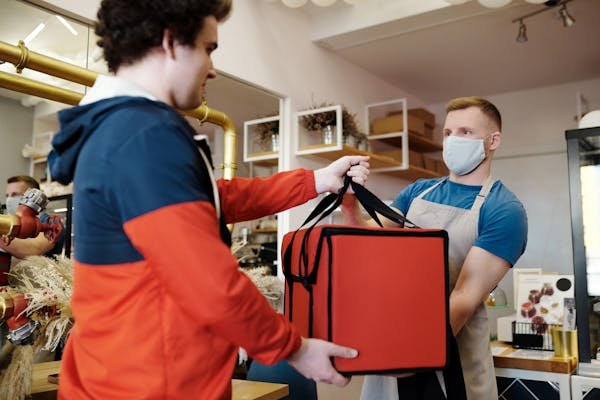
Make it part of your hybrid fleet strategy
Don’t choose between owned fleet or crowdsourced drivers—use both. Have your in-house team handle bulk deliveries and let gig drivers cover overflow or last-minute requests.
Partner with trusted platforms
Choose crowdsourced partners with reliable vetting, insurance, and tracking systems. Look for ones that integrate directly with your existing logistics tools to simplify operations.
Offer real-time tracking and feedback
Customers should see who’s delivering their package, where it is, and when it’ll arrive. Use platforms that allow driver ratings and live delivery status.
Watch the legal and brand risks
Because these drivers aren’t your employees, their behavior reflects on your brand—but is harder to control. Set clear service expectations and follow up on customer feedback diligently.
19. Real-time route optimization reduces fuel usage by 10–15%
Smarter routes, smaller bills
Every extra mile a delivery driver takes is money burned. That’s where real-time route optimization steps in. By adjusting delivery paths on the fly—based on traffic, weather, construction, or last-minute order changes—companies can reduce fuel usage by 10% to 15%. And when you’re running dozens or hundreds of vehicles, those savings add up fast.
This isn’t just about maps—it’s about intelligence. It’s about software that reacts to real-world conditions in real time.
How to start optimizing routes for fuel efficiency
You don’t need a massive tech overhaul—just a few smart upgrades can change everything.
Invest in dynamic routing tools
Look for software that recalculates routes as conditions change. Platforms like Onfleet, Routific, or Circuit use GPS, order volume, and historical traffic data to guide drivers toward faster paths.
Use historical delivery data
Start with what you already know. Which areas consistently slow you down? Where do drivers get stuck? Feed this data into your routing system to prevent repeat issues.
Enable mid-route changes
Sometimes a route looks good when the truck leaves, but then there’s a delay or cancellation. The best tools let you reassign stops or reroute in real time without calling or texting drivers manually.
Integrate with your order management system
When new orders come in, your system should instantly update the route queue. This helps batch deliveries intelligently without needing to send out a second vehicle.
Train drivers on the system
Even the smartest software needs buy-in. Make sure drivers know how to use the routing app, check for changes, and report issues that the system may not catch.
20. Autonomous vehicle pilots show potential cost reduction of 40–60%
The future is closer than you think
Self-driving cars and trucks aren’t science fiction anymore. Companies like Amazon, Nuro, and Starship are testing autonomous delivery vehicles on roads today. And the results? Cost savings of 40% to 60% over traditional delivery methods.
Why? No drivers, fewer mistakes, and lower operating costs. Autonomous vehicles work 24/7, don’t need breaks, and reduce labor expenses dramatically.
What to know before jumping in
While fully driverless fleets aren’t mainstream yet, understanding this trend—and preparing for it—can set you up for major savings later.
Start with semi-autonomous systems
Many logistics companies are already using autonomous features like adaptive cruise control, lane assist, and automated braking. These cut fuel use and improve safety, even if there’s still a driver behind the wheel.
Monitor autonomous delivery startups
Keep an eye on companies testing autonomous bots and vans. Their models often work best in controlled environments—like gated communities, campuses, or fixed delivery zones.
Explore autonomous last-yard delivery
Some companies use sidewalk robots to move packages from a delivery van to a customer’s front door. This minimizes driver time at each stop and speeds up route completion.
Focus on regulation and safety
Before adopting autonomous tech, you’ll need to understand local laws. Pilot programs often require special permits, liability coverage, and safety backups.
Build a phased adoption plan
Don’t wait for the technology to become mainstream overnight. Start testing in a small area, measure the impact, and scale when ready. Early adopters often get the most benefit when tech goes mainstream.
21. Drone delivery has an estimated per-mile cost of $0.88, compared to $2.50+ for trucks
Flying past roadblocks—literally
Drones are rewriting the cost equation for last mile delivery. With a per-mile delivery cost of just $0.88, they beat traditional trucks—often more than $2.50 per mile—by a huge margin. Drones avoid traffic, don’t require drivers, and can operate on minimal energy.
They’re especially efficient for lightweight, high-priority items like medicine, food, or documents. And in remote areas, they’re often the fastest (or only) option.
How to prepare for drone delivery
You don’t need to launch a full drone fleet tomorrow—but you should understand where they fit in and how they’re evolving.
Identify viable delivery zones
Drones work best in low-density, hard-to-access areas or tightly packed urban zones with rooftop access. Map out where drones could realistically fly—and land—within your existing delivery areas.
Understand payload limits
Most delivery drones today carry 5–10 pounds. Use them for small, high-value, or urgent packages rather than bulk orders.
Ensure customer readiness
Customers need to feel safe and confident about drone deliveries. Communicate clearly about how drones operate, how packages are dropped, and how weather may impact scheduling.
Partner with a drone delivery provider
Very few businesses need to build drone systems from scratch. Work with companies already running drone operations to test and scale this capability.
Watch the regulatory landscape
Drone delivery is heavily regulated. Make sure you stay updated on airspace restrictions, no-fly zones, and compliance requirements before launching any pilot programs.
22. Warehouse-to-door delivery is taking 30–40% longer in congested urban areas
Traffic is more than a nuisance—it’s a profit killer
Delivering in busy cities isn’t just expensive—it’s slow. Data shows that delivery times from the warehouse to the customer’s doorstep are taking 30% to 40% longer in urban areas due to congestion, construction, and limited parking. That kind of delay eats into productivity and inflates operational costs.
A driver who could complete 20 deliveries in a suburb might struggle to finish 12 in a dense city. Multiply that across your entire fleet and the cost of congestion becomes impossible to ignore.
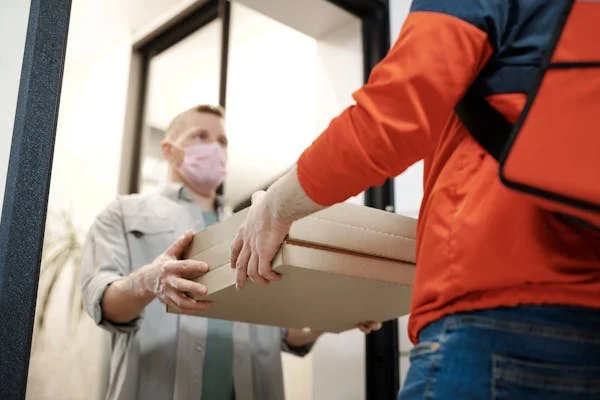
Strategies to beat the urban slowdown
You can’t control city traffic—but you can control how you respond to it.
Move fulfillment closer to the customer
Use urban micro-fulfillment centers, dark stores, or even underused retail space to stage inventory closer to high-demand zones. This shrinks the travel distance and makes same-day or even one-hour delivery possible.
Offer off-peak delivery slots
Encourage customers to choose early-morning, late-evening, or weekend delivery windows when roads are less busy. Not only does this reduce time per stop, but it also helps you avoid parking fines and delays.
Use smaller vehicles
Switch to bikes, mopeds, or compact electric vans that can maneuver through traffic and fit into tight parking spots. These vehicles are often faster and cheaper to operate in urban areas.
Batch deliveries by neighborhood
Avoid zigzag routes across town. Instead, concentrate deliveries in tight clusters to cut down travel time and fuel costs.
Monitor traffic in real-time
Use GPS and real-time traffic data to reroute drivers as conditions change. A delay caught early can save hours over the course of a shift.
23. Failed first attempts cost carriers an additional $4–6 per package
One miss, many problems
When a delivery doesn’t go through on the first try, it’s not just an inconvenience—it’s an added cost. On average, every failed first attempt costs delivery companies an extra $4 to $6. That includes re-routing, reattempting, customer service interaction, and sometimes storage or restocking fees.
And if the failure repeats? The cost—and customer dissatisfaction—can spiral fast.
Why first-attempt success is critical
Delivering right the first time isn’t just about efficiency—it’s about trust. A failed delivery makes customers feel frustrated, anxious, and unsure about your reliability. That can lead to complaints, refunds, or churn.
Here’s how to fix that:
Let customers choose delivery windows
Give them control. People are far more likely to be home if they’ve picked the time. Use 2-hour windows to offer convenience without overcomplicating scheduling.
Send delivery reminders
Text or email customers a few hours before delivery. Include a tracking link and ETA. The more communication, the better the chance they’ll be available.
Enable doorstep drop-offs (when safe)
If the product doesn’t require a signature and theft risk is low, allow safe-drop authorizations. This helps you complete deliveries even if the customer isn’t home.
Verify address and delivery instructions
Ask customers to double-check their address, apartment number, and instructions during checkout. Even small typos or missing gate codes cause big problems on delivery day.
Use customer-facing tracking tools
Let customers follow their package live on a map. This helps them make sure they’re home at the right time, especially when the ETA changes mid-route.
24. Customer returns from e-commerce contribute to 30% of total last mile traffic
Returns are jamming your delivery lanes
Every time a customer sends a product back, it creates another trip. It’s not just a cost on your books—it’s a vehicle on the road, a package in the system, and a driver making yet another stop. That’s why returns now account for 30% of last mile traffic.
And this trend is growing. As return policies get more generous and customers treat online shopping like an extended fitting room, return volumes are rising fast.
How to reduce the traffic—and the cost
You can’t eliminate returns, but you can design your operation to handle them smarter.
Encourage return consolidation
Ask customers to return multiple items in one shipment instead of one at a time. Offer incentives for combining returns into a single trip or drop-off.
Promote eco-friendly return methods
Push customers toward lockers or centralized return hubs. These reduce traffic, lower emissions, and cut your per-return cost dramatically.
Make fit and product info crystal clear
Most returns are due to size, style, or quality not matching expectations. Use real customer photos, size guides, and AI-powered fit tools to help people get it right the first time.
Offer digital refunds after drop-off
Instant refunds make customers more likely to use self-service return methods, which are cheaper and faster for you. No need for pickups, no waiting for warehouse inspection.
Track return rates by SKU
Identify products with high return rates. It might be a sizing issue, a quality concern, or just a mismatch with customer expectations. Fixing the product problem reduces future return traffic at the source.
25. 30% of businesses use third-party logistics (3PLs) for last mile services
Outsourcing the last mile: a growing trend
More and more businesses are turning to third-party logistics providers (3PLs) to handle their last mile deliveries. About 30% already use 3PLs for this final stretch, and the number is climbing fast.
Why? Because managing last mile operations in-house is hard. It’s resource-heavy, technology-intensive, and constantly shifting. By outsourcing, businesses gain flexibility, faster scaling, and access to advanced logistics networks—without the overhead.
Should you use a 3PL for last mile?
It depends on your goals, budget, and customer base. But for many growing companies, 3PLs can be a smart move.
When 3PLs make sense
- You’re growing fast and can’t build delivery capacity quickly enough
- You want to expand into new regions without investing in new infrastructure
- You need better tech and tracking tools, but don’t want to build your own
- Your existing team is overloaded and struggling to meet demand
Choosing the right 3PL partner
Not all 3PLs are created equal. Look for:
- Strong local delivery networks in your key markets
- Real-time tracking and clear proof-of-delivery tools
- Transparent pricing and flexible contract terms
- Ability to integrate with your order management system
Keep quality control in mind
Outsourcing doesn’t mean offloading responsibility. Make sure your 3PL shares your standards for speed, customer service, and professionalism. Use service level agreements (SLAs) and regular performance reviews to stay aligned.
Blend 3PL with in-house options
You don’t have to choose one or the other. Use 3PLs in regions where you don’t have coverage, and maintain in-house control in your core service areas. This hybrid approach gives you agility and consistency.
26. Electric vehicle adoption in last mile fleets can reduce fuel costs by up to 70%
EVs aren’t just green—they’re cost-effective
Switching to electric vehicles (EVs) can cut your fuel costs by as much as 70%. That’s a massive saving, especially in delivery operations where vehicles are on the road all day.
EVs also reduce maintenance expenses. No oil changes, fewer moving parts, and less wear and tear. Plus, they align with sustainability goals and can improve your brand image with eco-conscious customers.
How to electrify your last mile fleet
You don’t need to flip the switch overnight—but a step-by-step plan can put you ahead of the curve.
Start with a pilot program
Test EVs in one region or with a specific delivery route. Track fuel savings, maintenance time, and driver feedback. Use this data to build a business case for expansion.
Look for government incentives
Many countries, states, and cities offer tax credits, grants, or rebates for buying EVs or installing charging stations. Take advantage of these to reduce upfront costs.
Focus on short, high-density routes
EVs are ideal for local deliveries—urban or suburban—with regular return-to-base operations. The stop-start nature of these routes also maximizes regenerative braking, which recharges the battery during stops.
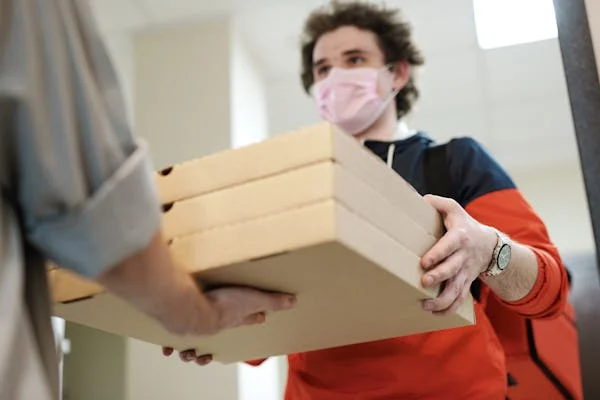
Plan your charging infrastructure
You’ll need charging stations at your depots or warehouses. Consider fast chargers for overnight full charges or mid-day top-ups. Partner with charging providers if you don’t want to own the infrastructure outright.
Communicate the switch to customers
Let your audience know you’re going electric. It’s a great marketing message and shows your commitment to sustainability. It can also encourage customer loyalty and brand trust.
27. Densely populated cities can achieve up to 80% delivery efficiency with micro-fulfillment
Smaller warehouses, smarter logistics
Micro-fulfillment centers (MFCs) are compact, tech-enabled hubs located near or within cities. They’re designed to process a high number of small, fast orders—perfect for e-commerce and same-day delivery.
In dense urban areas, MFCs can drive delivery efficiency up to 80% by reducing travel time, speeding up order processing, and enabling tighter delivery windows. They bridge the gap between warehouse and doorstep.
Why micro-fulfillment works
Traditional warehouses are far from customers. That’s fine for bulk distribution, but not for quick local drops. MFCs flip the model—they store high-demand products closer to where people live and shop.
Benefits of MFCs in last mile logistics
- Shorter delivery routes
- Faster order processing
- Lower fuel and labor costs
- More reliable ETAs for customers
- Less strain on long-haul networks
Where to set up MFCs
Look for:
- High order density zones
- Underused retail or commercial real estate
- Proximity to public transit or major roads
- Access to gig worker or 3PL networks
Use automation for speed
Equip your MFC with robotics, automated picking, and real-time inventory systems. This reduces errors, speeds up order turnaround, and allows you to run lean operations with fewer staff.
Treat MFCs as flexible nodes
Use MFCs to support promotions, handle returns, or test new product lines in specific markets. Their flexibility makes them a powerful logistics and marketing asset rolled into one.
28. 84% of shoppers won’t return after a bad delivery experience
One bad drop can lose a customer for good
This stat is sobering: 84% of consumers say a single poor delivery experience is enough to make them take their business elsewhere. That’s nearly nine out of ten people who won’t forgive a missed ETA, damaged package, or confusing tracking experience.
All the hard work you put into marketing, product development, and customer service can be undone by one bad delivery. That’s how high the stakes are in the last mile.
Turning delivery into a loyalty driver
You can’t always control external issues like weather or road closures. But you can control the customer experience.
Provide clear, live tracking
Don’t just say, “Your package is on the way.” Give a map, an estimated delivery time, and real-time updates. Customers love transparency—and it reduces “Where’s my order?” inquiries.
Communicate before problems occur
If a delay happens, notify the customer right away. Offer a new ETA, explain the cause, and apologize sincerely. Proactive communication often saves the relationship.
Use branded tracking pages
Instead of sending customers to a generic carrier website, create your own branded tracking portal. It’s another touchpoint to build trust and offer support.
Follow up post-delivery
Send a message asking if everything arrived in good condition. This shows you care and gives customers a chance to speak up before they leave a negative review.
Offer fast resolution
If something does go wrong, solve it fast. Empower your support team to issue refunds, resend items, or offer credit. A swift, helpful response can turn a bad experience into a loyal one.
29. AI-powered logistics platforms can improve delivery ETAs by up to 40%
Artificial intelligence is a last mile game-changer
Predicting accurate delivery times isn’t easy. So many variables—weather, traffic, route changes, customer availability—can throw off your plans. That’s why more companies are turning to AI-powered logistics tools. These platforms crunch real-time and historical data to give customers better ETAs—and they work. Some see ETA accuracy improve by as much as 40%.
That kind of precision builds confidence. Customers feel informed, and you reduce complaints and missed deliveries.
How to put AI to work in your delivery flow
You don’t need a data science team to get started. Plenty of out-of-the-box tools offer AI-powered features you can plug in today.
Use predictive ETA engines
Many route optimization tools now use machine learning to estimate delivery windows more accurately. These tools adjust dynamically as conditions change on the road.
Analyze delivery time patterns
AI can analyze your own historical delivery data to spot slow zones, repeat issues, and peak hours. This helps you plan smarter, not just faster.
Forecast demand more accurately
Use AI to predict order volume by region, product, or time of day. This lets you pre-position inventory and staff before a bottleneck occurs.
Automate delivery rescheduling
When delays happen, AI can help reschedule deliveries, notify customers, and reroute drivers—all without human intervention. This saves time and reduces stress.
Integrate AI into customer support
Chatbots powered by AI can answer delivery questions instantly, give live updates, and troubleshoot minor issues—freeing your team to focus on complex cases.
30. 90% of last mile costs are borne by the seller or platform, not the customer
The cost burden is on your shoulders
Here’s the reality: while customers want fast, free, perfect delivery, they’re rarely the ones paying the true cost. About 90% of last mile expenses are absorbed by sellers or platforms. That includes labor, fuel, packaging, software, returns, and more.
And yet, you can’t just pass these costs along. If you charge too much for shipping, you lose sales. If you offer free delivery without a plan, you lose money. The solution? Smart, proactive management.
How to make the economics of delivery work
It’s a balancing act—but with the right strategy, you can meet customer expectations without bleeding cash.
Focus on order value over shipping price
Find ways to increase average order value through bundles, upsells, and threshold-based promotions. This lets you absorb delivery costs more easily.
Streamline fulfillment and reduce waste
Fewer touches mean lower costs. Automate picking and packing, reduce packaging material, and route orders from the closest warehouse.
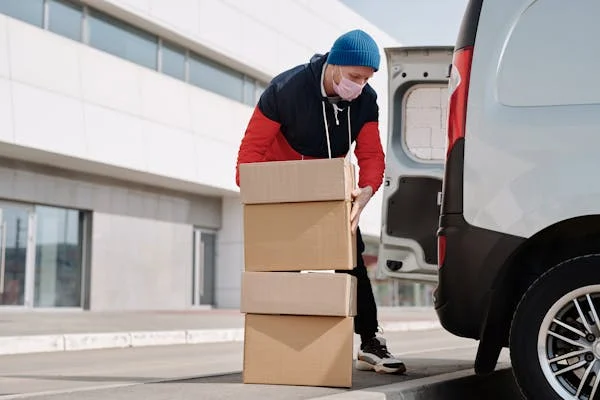
Offer delivery tiers and options
Not every customer needs fast delivery. Give them choices—free slower shipping, paid faster shipping, or pickup options—and let them decide what matters.
Build delivery cost into product pricing
Instead of showing shipping as a separate line item, consider increasing your product price slightly to “hide” the cost of free shipping. This often feels more acceptable to customers.
Monitor delivery profitability at the order level
Not all orders are equal. Use data to see which orders make you money and which ones don’t. Then, adjust your policies or pricing to stay profitable overall.
Conclusion
Last mile delivery is where the customer experience becomes real—and where costs can quickly spiral out of control if you’re not careful. But the good news is that every stat we’ve explored is also an opportunity. An opportunity to improve efficiency, boost customer loyalty, and build smarter logistics strategies.


